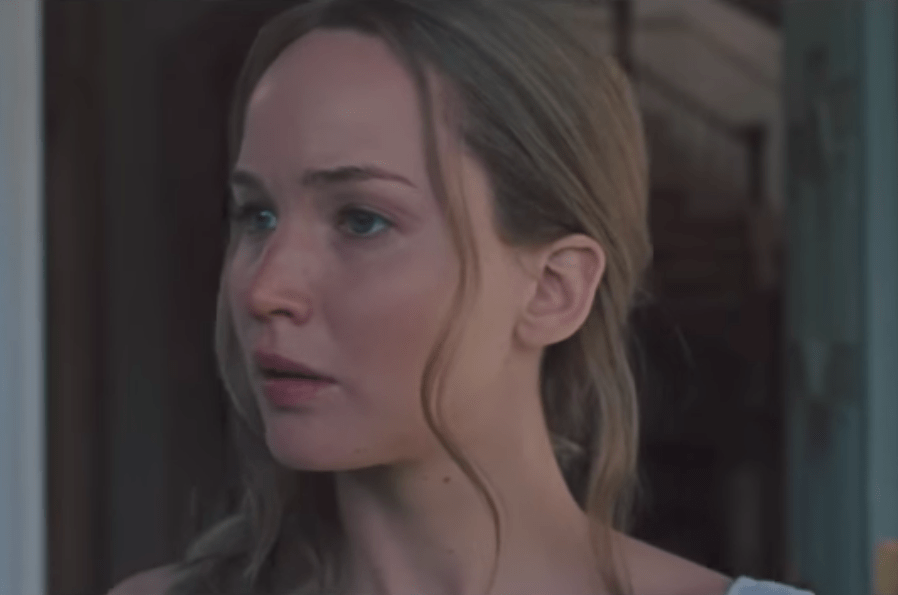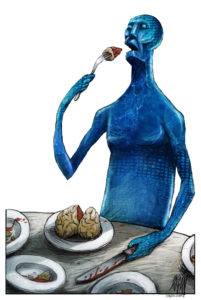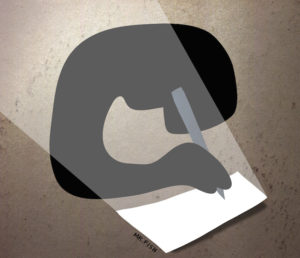Love It or Hate It, ‘Mother!’ Will Be 2017’s Most Talked-About Film
The allegorical film from director Darren Aronofsky bends genres but begs for an explanation. Jennifer Lawrence as the title character in "Mother!" (Screen shot via Paramount Pictures / YouTube)
Jennifer Lawrence as the title character in "Mother!" (Screen shot via Paramount Pictures / YouTube)
“Mother!,” the new allegory from Darren Aronofsky (“Black Swan”), is many things, none of them categorizable. It is as emphatic as its exclamation point, as archetypal as a Bible story, and as deeply unsettling as a 1960s Roman Polanski movie. To those of a certain age it appears to be the spawn of “Repulsion” and “Rosemary’s Baby.” A younger viewer might call it an eco-minded M. Night Shyamalan film.
No matter how one describes it, “Mother!” is a genre-bender. It takes two handfuls of suspense, dots it with a few dollops of domestic drama and a soupçon of undiluted horror, and tosses it all together into a crazy salad of psycho-terror and religious imagery.
Jennifer Lawrence has the title role and Javier Bardem co-stars as Him, a poet, with whom she cohabitates. They live in handsome Victorian house surrounded by woods. Mother is in the process of lovingly restoring the place, lately the near-casualty of a raging fire. At the same time, she nurtures Him and serves as his muse. Note that he often leaves the house to clear his head while she goes no further than its threshold.
For Mother, the house is a living, trembling organism: She feels the heartbeat behind its walls and the pulse beneath the creaky floorboards. Mother appears to be the human embodiment of—shall we say?—House. If something in House shatters, something in Mother breaks and she busily tries to repair it. The camera seems to be connected to Mother by an umbilical cord, dogging her every step. This is all suggestively shot by cinematographer Matthew Libatique in a posh, portentous style that resembles an Architectural Digest spread peppered with intimations of a primal crime scene.
Aronofsky divides his film into three acts. In the first, House has uninvited visitors, Man (Ed Harris) and Woman (Michelle Pfeiffer), who disrupt the domestic serenity with Man’s hacking cough, their chain-smoking and an almost comical disrespect for Mother’s house rules. Woman repays Mother’s hospitality by criticizing her lack of sexual allure and her childlessness.
When there’s an accident, Him accompanies the guests to the hospital, leaving Mother alone and frightened. She devotes herself to Him. Why can’t he reciprocate? When Mother fights with Him about the asymmetry of their relationship, new strangers intrude: Enter the sons of Man and Woman, who go at each other like the biblical Cain and Abel.
This sudden interruption by the brothers, who appear to be the archetypal Chosen son and the overlooked one, begs for some kind of biblical explanation. If the brothers represent Cain and Abel, who are Him and Mother? And does it matter? Aronofsky’s last film, after all, was “Noah,” a biblical story about violence against man and against Earth. “Mother!” appears to be a quasi-biblical tale about the violence of man against Earth.
As the movie progresses into a third act that is the cinematic equivalent of Hieronymus Bosch’s triptych of “The Last Judgment,” the film suggests multiple readings. Could it be that capital-H Him is God and Mother is Mother Earth, the marriage of the Judeo-Christian deity and a Greek goddess, arguing over the division of domestic responsibilities? Are Him and Mother representations of the male Creator and female procreator, one who sometimes destroys in order to create the other motivated to conserve and preserve resources? Or is “Mother!” a simple parable of the artist who uses up his muse to fuel his writing?
In this month of hurricanes and earthquakes, it is hard not to see “Mother!” as a cautionary ecological tale about the violence of Earth against those who squander its resources. Speaking of squandered resources, I wish that Bardem and Lawrence had roles to play rather than metaphors to embody. Michelle Pfeiffer, though, has fun with her role.
Is the movie any good? “Mother!” is not a movie I was psychologically engaged with, but one I felt compelled to parse. I enjoyed thinking about it more than watching it. As a rule, it should be the reverse. Here’s a prediction, though: This love-it-or-hate-it allegory will be the most talked-about movie of the year.
Your support is crucial...As we navigate an uncertain 2025, with a new administration questioning press freedoms, the risks are clear: our ability to report freely is under threat.
Your tax-deductible donation enables us to dig deeper, delivering fearless investigative reporting and analysis that exposes the reality beneath the headlines — without compromise.
Now is the time to take action. Stand with our courageous journalists. Donate today to protect a free press, uphold democracy and uncover the stories that need to be told.






You need to be a supporter to comment.
There are currently no responses to this article.
Be the first to respond.